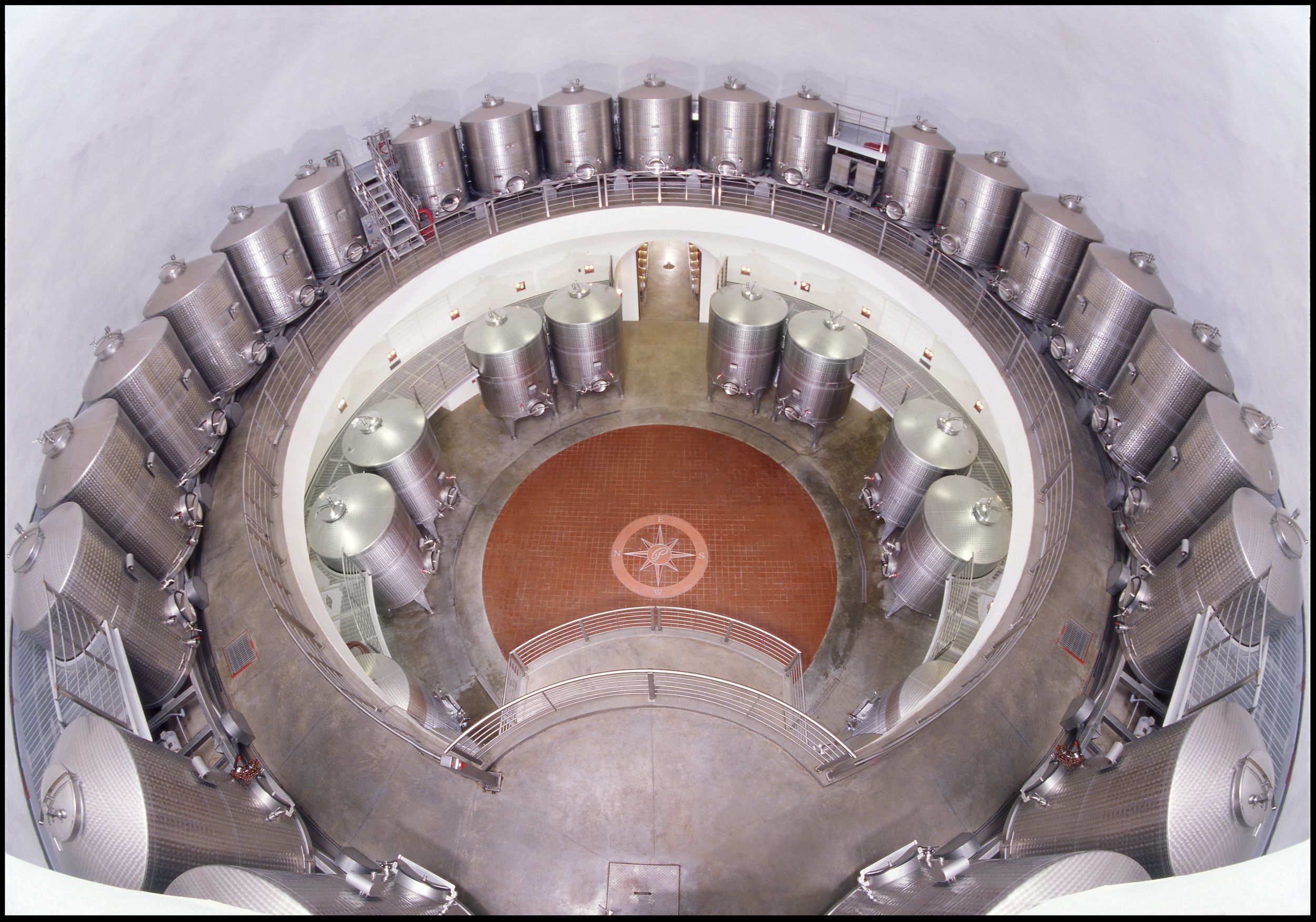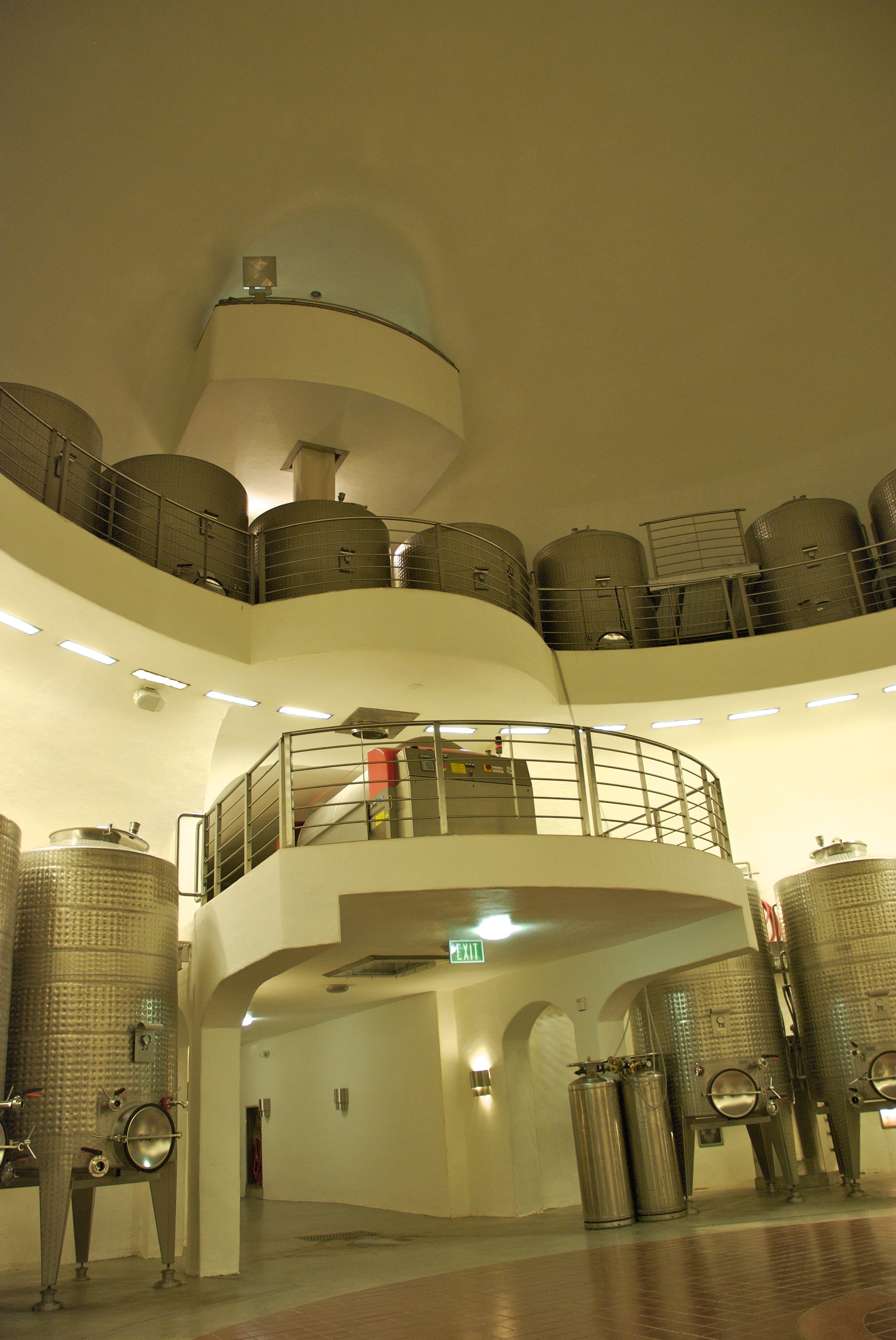Humans & High-Tech: Working Together to Make Great Wines
The wine industry remained virtually unchanged by the technology boom of the last century, and that is undeniably part of wine’s traditional appeal. Moldy caves, dusty shiners, and “funky” aromas hearken back to a romantic past and have made winemaking synonymous with tradition. Enter a generation of innovation. Director of Operations for Palmaz Vineyards Christian Palmaz, whose father invented the heart stent, says their five-level, fifteen-story, gravity flow winery is “a marriage between technology and romance.”
He casually but confidently admits that “There’s a very short list of what I can actually control… cleanliness, mistakes, the winemaker making exact blends…,” and he believes the future of high-quality winemaking hinges on the application of food-grade standards, like isolation and quarantining: “Because of the higher pH in new world wines, they are more susceptible to imperfections than ever before. I don’t want to take flaws in winemaking and coin them as style,” says Palmaz.

The Palmaz winery’s multi-level fermentation dome houses a carousel of twenty-four stainless steel fermentation tanks –one for each of their twenty-four vineyard blocks. The only one of its kind in the world, it guarantees isolation, and begins the gravity flow process by rotating directly beneath the sorting table to “bring the tanks to the grapes.”
A proprietary touch-screen computer regulates fermentation, making tiny temperature changes every minute, in each tank, to pre-set specifications. Rotating tanks and computerized fermentation might overshadow the romance of this “marriage” until Palmaz explains that he uses technology to enhance the human touch, not diminish it. “Face time makes great wine. This system helps the winemaker achieve a certain level of control, but gives her enough time to be there using the only instrument she should be using…a glass.”
Charles Thomas, Director of Vineyards and Wine Making for Quintessa, is another “Eno-Tech” revolutionary and one of the first to re-implement the gravity flow method. While gravity flow nods to the simple and artistic nature of the past, the high technology of optical sorting has further enhanced the quality and integrity of Quintessa’s fruit.

Optical sorting allows winemakers to select the size, shape and color of the desired berry, and then the machine photographs the grapes and debris rumbling down the conveyer belt. Anything that doesn’t fit the description gets blasted with a jet of air into the junk pile. “You get at least as good quality sorting, at well over two times the speed,” says Thomas. “That means I can spend less time on the crush deck and more time in the vineyards.”
One might think scientific farming methods, and multi-million dollar facilities equipped with mathematically-designed computer sorting and fermentation, would eliminate flawed wine…they don’t. Nature still corks or creates notable flaws in a significant portion of bottled wines. So are screw caps the answer? Not for the Palmaz family, who despite a philosophy that employs the highest of tech are sticking to tradition and believe that “a two-cent closure has no place on a bottle like [theirs].” Thomas agrees, “As of yet, there’s nothing better than a good cork and nothing worse than a bad cork.” Thomas works with Cork Supply USA and hires certified “sniffers,” people capable of detecting TCA (cork stink) at one part per trillion, to test every cork before insertion into the bottle.
Human “sniffers”? Isn’t there technology better capable of handling this seemingly simple task? “Sensitive humans come up with the stats until there is a machine that can do it better,” says Thomas. “Right now there isn’t a machine sensitive enough.”
Palmaz and Thomas agree that the human touch is irreplaceable, and that the goal is to make a wine free from defect and that reflects the characteristics of the vineyards it’s sourced from. “Technology is helping us be more exact and precise in our decisions,” says Palmaz, “but nothing beats the human hand and eye for quality.”
**Check out this article and other cutting-edge wine related articles in the Napa Valley Life Magazine!**